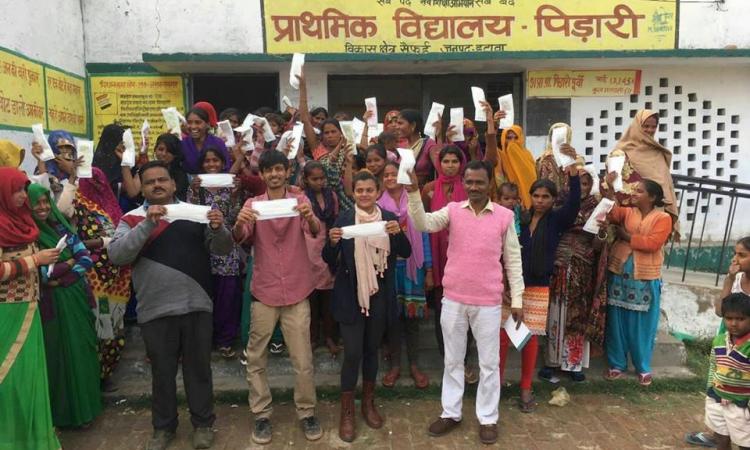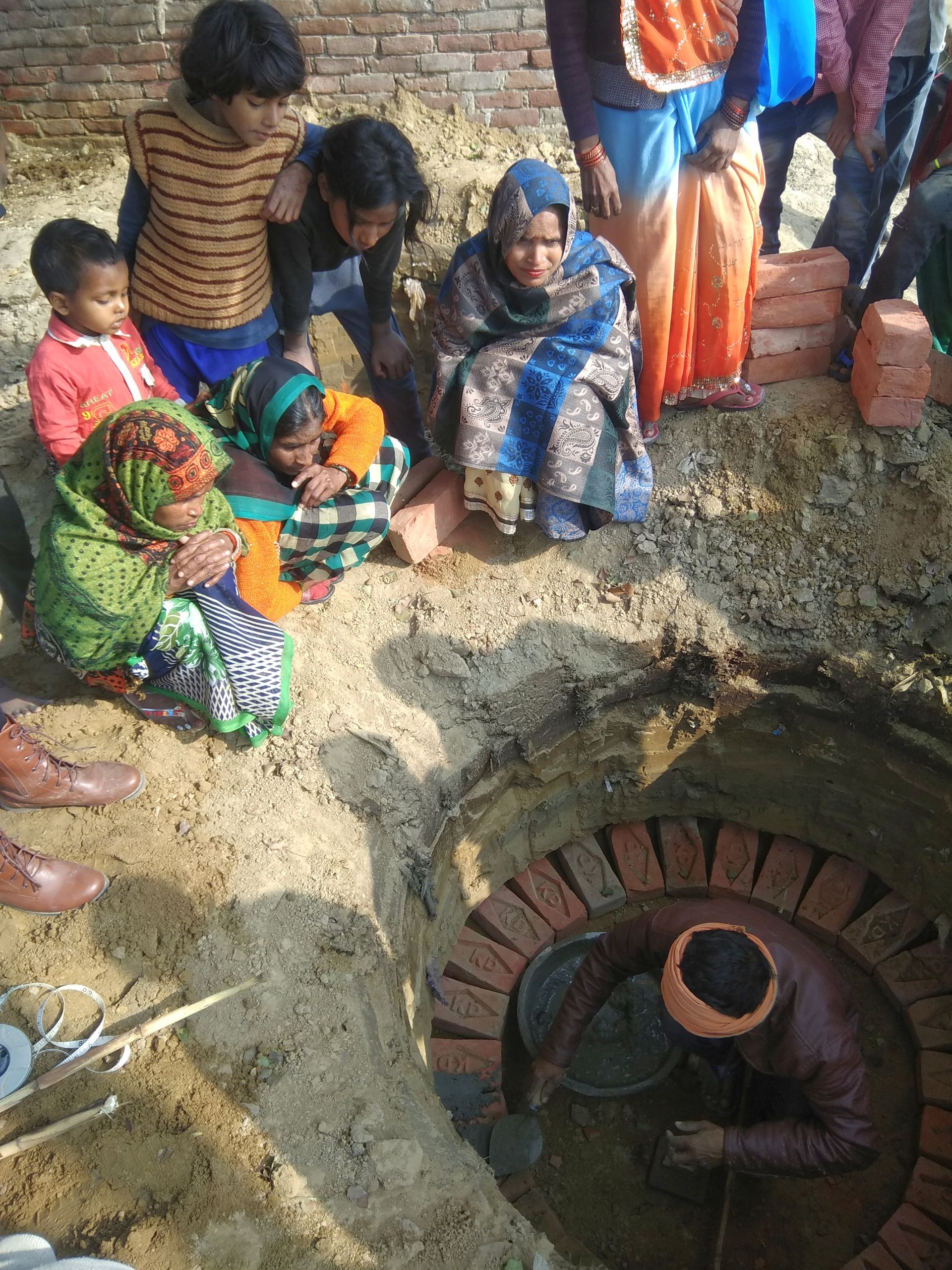
Most of Etawah, a city on the banks of the Yamuna river in Uttar Pradesh, has plenty of stories to share about their favourite leader Daddaji or Mulayam Singh Yadav, one of the former chief ministers of Uttar Pradesh. The area bordering the ravines near Chambal, on the other hand, resounds with tales of dacoits like Phoolan Devi, Seema Parihar and Nirbhay Gujjar. “Politics is a way of life in this agriculturally prosperous district. We had heard of instances of pakad (abduction) and were very wary in the beginning,” says Aishwarya Mishra, a former Zilla Swachh Bharat Prerak (ZSBP) for Etawah and earlier for Kanpur (Dehat/rural).
Mishra, along with Divyanshu Seth, another ZSBP at Etawah are young professionals placed by Tata Trusts, a leading philanthropic organisation. in collaboration with the Ministry of Drinking Water and Sanitation to give a boost to the Swachh Bharat Mission (Gramin) or SBM-G at the district level. They are deputed to work for a year with the district collector or the district development officer, who is in charge of the SBM-G programme. SBM-G is the rural component of the larger SBM scheme.
The Preraks provide coordination, management and monitoring support to the district administration for effective implementation of SBM-G. They are involved in developing district-level swachhta action, finance, and sustainability plan for monitoring mechanisms and quality supervision protocols. They also ensure monitoring and implementation support for district-level sustainability initiatives pertaining to the programme. That's not all. They provide support for the development and rollout of the Social Behavioural Change Communication (SBCC) strategy, with a focus on sanitation and personal hygiene issues.
Who will flout the decree?
News has just trickled in that the present chief minister Yogi Adityanath wants the state to be open defecation free (ODF) by October 2, 2018. The Swachh Bharat Mission team is on the go. “Funds have been provided under the SBM-G. Toilet construction has to be accelerated. Targets have to be achieved and the MIS (management information systems) operators responsible for the data entry of toilets are working through the night. Data on built-up toilets need to be geo-tagged and updated regularly on the portal,” says Seth worried that the efforts should not end at disbursal of funds.

As per a news report, in all blocks of Etawah, photographs of around 7000 to 8000 toilets in each block are yet to be uploaded on the portal, which is essential to focus better on verification and monitoring of toilet use.
With the sanitation coverage reaching over 97.37 percent [source: SBM (Gramin) portal as on July 23, 2018] from 52 percent in the 10 months that he spent as ZSBP, it has been a successful stint for Seth. “When I joined, I realised that the SBM work was not on track. Toilets were being constructed but people were still waiting for the incentive amount. My first task was to get the payments fast tracked and ensure that the toilets were geotagged and the data updated on the portal. We also organised gram sabhas and with the help of swachhagrahis (field workers), tried to motivate people to construct toilets,” says Seth.
Leaking loos, a problem
A mechanical engineer, Seth has had brief stints with a couple of startups like Oyo Rooms. Fully engrossed in his present work, Seth is now worried about leaking toilets. Alluvium sand is the major water-bearing formation in the area and water tables are high at certain places. He fears that the groundwater in the district can become highly polluted due to sewage seeping from poorly constructed and improperly lined pit latrines. Many septic tanks are not built as per norms and this leads to faecal matter or sludge leaking into soil impacting the drinking water and the health of the soil in the vicinity.
“The government’s earlier policy to set up quick pit latrines, septic tanks or sewage dumping sites in the backyards was not right. Villages lack underground sewerage networks here and people are averse to the twin-pit system. How can we have a sewage pit below our puja room or our kitchen, people ask. Some even feel that their house will collapse given the heavy seepage. It is common to see sewage flow into storm drains or be routed to cesspools,” says Seth.
“People have notions of purity and pollution rooted in our caste system. They are scared of emptying twin pits even when the sewage has decomposed. It was hard to dispel illogical notions around the construction of toilets,” says Seth.
What will happen after SBM finishes in 2019? These tanks need to be desludged (emptied) once in three years. Manual scavenging is out of the question and one will have to plan for mechanised vacuum sludging. Is it economically feasible in rural areas? Will the government do it? Generally, here, the septic tanks are not desludged and water mixed with faeces seeps through the soil, contaminating the groundwater table. Drinking this untreated water can be a threat to public health. These questions have been bothering Seth.
Bringing people on board
 “Arguing against open defecation and convincing people about its ill effects were very hard. Getting them to own the programme was my first challenge. We tried to direct our messaging towards women who seem to accept toilets better. Educating children at schools and organising events, plays and exhibitions, and distributing children’s books to communicate the importance of sanitation helped,” says Mishra.
“Arguing against open defecation and convincing people about its ill effects were very hard. Getting them to own the programme was my first challenge. We tried to direct our messaging towards women who seem to accept toilets better. Educating children at schools and organising events, plays and exhibitions, and distributing children’s books to communicate the importance of sanitation helped,” says Mishra.
“Community-led total sanitation (CLTS) approach has been successful here. Our team of dedicated coordinators and swachhagrahis used information, education and communication (IEC) methods during their visits to the villages. We conducted gram sabhas on the subject of ODF sustainability and galvanised people through innovative triggering techniques such as role plays. We also focused on menstrual health and hygiene programmes for girls and women,” says Mishra.
“We experimented with precast toilets under what we called a ‘one-day toilet’ campaign. Parts of these toilets are cast off-site and are transported to the construction site, reducing the construction time. The SBM-G guidelines are somewhat inflexible with regard to this. So, we could not take this up on a larger scale. Even when these toilets are less expensive and can be built quicker, getting them sanctioned was not easy,” says Seth.
ODF sustainability, another challenge
Toilet construction picked up pace after they joined as ZSBPs of Etawah. But, Seth and Mishra know that it is difficult for a village to sustain its ODF status. The sustenance of ODF requires behavioural change as well as regular monitoring and incentives.
“The SBM has prompted a collective behaviour change on a wide scale unlike earlier programmes that dealt with just the construction of toilets. It may have provided a momentum to go ODF but such a change cannot be crammed into a five-year timeframe,” says Mishra.
“Social sector fellowships like ZSBP facilitate our professional as well as personal development. Once selected, we are guided through a process by our professional mentors who provide us with support that build our capacities. We get to work on multifarious problems in a complex area and are given exposure to new ideas and techniques. It has been a life-changing experience and I got a hands-on understanding of the government sector. I hope to stay connected to social justice issues even after I revert back to the private sector where I worked earlier,” says Seth.